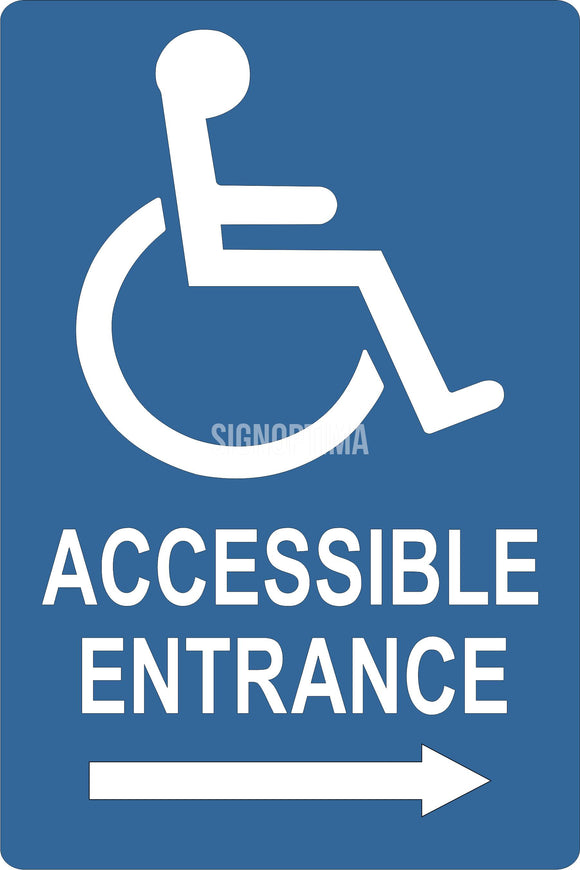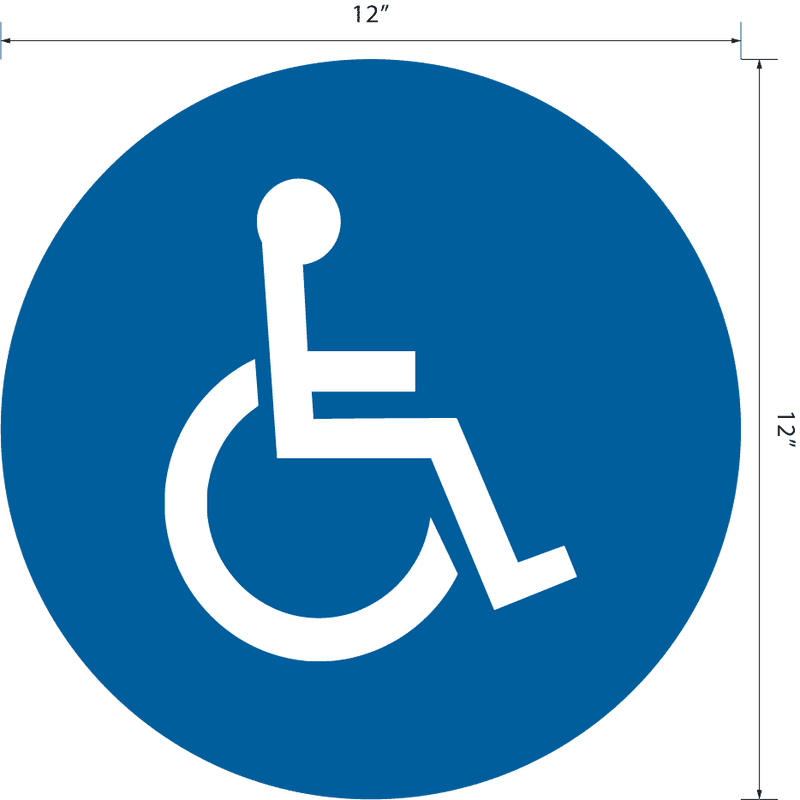Recognizing the Laws Behind ADA Signs
Recognizing the Laws Behind ADA Signs
Blog Article
ADA Signage: Making Sure Accessibility and Conformity in Public Spaces
ADA signage plays an essential function in assuring ease of access and conformity within public rooms, dramatically adding to an inclusive atmosphere for people with handicaps. As we discover the subtleties of ADA signs, from tactile attributes to develop intricacies, it's crucial to consider how these elements integrate to copyright the civil liberties of all individuals.
Importance of ADA Signs
In modern society, the value of ADA signage prolongs beyond mere compliance with legal requireds to embody a commitment to inclusivity and availability for all people. These indicators are crucial in creating settings where people with disabilities can navigate public areas with the exact same convenience and independence as those without handicaps. By giving standard and clear information, ADA signage ensures that everybody can access centers, solutions, and info without obstacles.
The value of ADA signs exists in its ability to boost the lifestyle for individuals with handicaps by advertising equivalent access. It eliminates the obstacles that could or else prevent their capability to take part fully in area life. These signs offer as visible indications of an organization's devotion to variety and equality, showing wider social values that champion the rights and dignity of all people.
In addition, ADA signage plays a critical duty in public safety and security. By guiding individuals to leaves, bathrooms, and various other necessary facilities, it guarantees that all people, despite physical ability, can leave securely throughout emergencies. In summary, ADA signage is not just a regulatory requirement however a powerful tool for promoting a equitable and inclusive culture.
Key Aspects of Conformity

Positioning is essential; signs must be installed in locations that are obtainable and quickly noticeable. Usually, signs should be placed between 48 and 60 inches from the ground to ensure availability for both standing and wheelchair customers. Responsive aspects, such as Braille, are important for people with aesthetic problems, providing critical info in a non-visual format.
High-contrast colors in between the message and history are needed to improve readability for individuals with low vision. The ADA mandates specific comparison ratios to make certain clearness. In addition, character size is a vital consideration, with minimum height needs dictated by the seeing distance to make sure readability from different angles.
Layout Considerations for Ease Of Access
Creating easily accessible signage needs a careful technique to ensure it fulfills the demands of all users, specifically those with specials needs. The size of the message is just as crucial, with ADA guidelines advising a minimal height based on check out here seeing range to guarantee clarity.
Contrasting shades between text and background are crucial for exposure, especially for individuals with visual disabilities. In addition, tactile components, such as Braille and raised characters, are important for people that are blind or have low vision.
In addition, read this the positioning of signs plays a significant duty in availability. Indicators ought to be installed in places that are unobstructed and easily reachable. Making certain that signs is installed at proper heights and angles makes it possible for all users, consisting of those using wheelchairs, to engage with them efficiently.
Common Errors to Stay Clear Of

Another common error is the incorrect placement of signage. ADA standards define accurate height and location needs to guarantee that indications are conveniently noticeable and reachable by all people, consisting of those using mobility devices. Disregarding these guidelines not just obstructs access however likewise takes the chance of non-compliance with lawful requirements.
Additionally, insufficient contrast between text and history is a frequent oversight. Ample comparison is crucial for readability, particularly for people with reduced vision. Developers occasionally pick shades that are aesthetically attractive yet do not have the essential comparison, rendering the Related Site message challenging to recognize.
Finally, some developers stop working to incorporate tactile components, such as Braille, which are essential for individuals who are blind. Leaving out these functions not just causes non-compliance with ADA laws but also limits access for a section of the population that relies upon responsive details.
Future Trends in Signs
Developments in innovation and enhancing recognition of inclusivity are forming the future fads in signage style. Digital signs, for instance, is progressing to include interactive features and real-time updates, which can be crucial in giving dynamic information in public rooms.
An additional emerging fad is the utilization of augmented reality (AR) to improve individual experience. AR-enabled signage can overlay electronic info onto the physical environment, giving aesthetically impaired people with auditory or haptic responses. ADA Signs. This technology not only improves ease of access yet additionally produces an interesting experience for all individuals
Sustainability is also a substantial aspect affecting signs patterns. Environment-friendly products and energy-efficient illumination remedies are being focused on to straighten with international environmental goals. Improvements in materials science are leading to the development of even more resilient and weather-resistant indicators.
Conclusion
ADA signs plays a crucial role in guaranteeing availability and conformity within public areas by integrating responsive elements, high-contrast colors, and strategic placement. The adherence to ADA standards not only assists in risk-free navigating for individuals with impairments but likewise signifies an organization's dedication to diversity and inclusivity. By preventing usual errors and embracing future trends, public spaces can continue to advance these values, ensuring that the legal rights and dignity of all people are valued and maintained.
ADA signs plays an indispensable role in guaranteeing ease of access and conformity within public spaces, dramatically contributing to a comprehensive atmosphere for people with specials needs. As we discover the nuances of ADA signs, from responsive features to design details, it's essential to take into consideration how these elements coalesce to copyright the rights of all customers.In modern-day society, the value of ADA signage prolongs beyond simple conformity with legal mandates to embody a commitment to inclusivity and availability for all individuals. By giving standard and clear info, ADA signs ensures that every person can access facilities, solutions, and information without obstacles.
ADA signs plays an essential function in ensuring accessibility and compliance within public areas by including tactile aspects, high-contrast shades, and critical placement. (ADA Signs)
Report this page